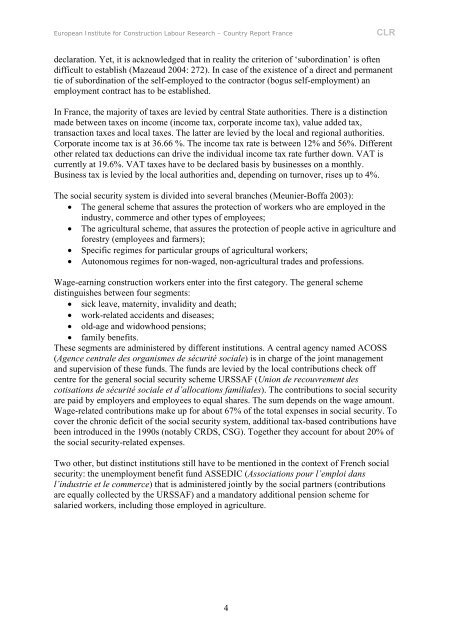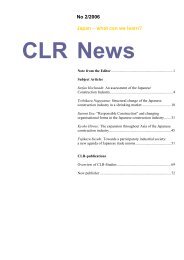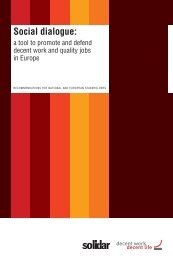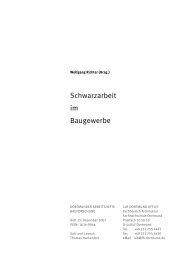Country report France - Construction Labour Research
Country report France - Construction Labour Research
Country report France - Construction Labour Research
You also want an ePaper? Increase the reach of your titles
YUMPU automatically turns print PDFs into web optimized ePapers that Google loves.
European Institute for <strong>Construction</strong> <strong>Labour</strong> <strong>Research</strong> – <strong>Country</strong> Report <strong>France</strong>CLRdeclaration. Yet, it is acknowledged that in reality the criterion of ‘subordination’ is oftendifficult to establish (Mazeaud 2004: 272). In case of the existence of a direct and permanenttie of subordination of the self-employed to the contractor (bogus self-employment) anemployment contract has to be established.In <strong>France</strong>, the majority of taxes are levied by central State authorities. There is a distinctionmade between taxes on income (income tax, corporate income tax), value added tax,transaction taxes and local taxes. The latter are levied by the local and regional authorities.Corporate income tax is at 36.66 %. The income tax rate is between 12% and 56%. Differentother related tax deductions can drive the individual income tax rate further down. VAT iscurrently at 19.6%. VAT taxes have to be declared basis by businesses on a monthly.Business tax is levied by the local authorities and, depending on turnover, rises up to 4%.The social security system is divided into several branches (Meunier-Boffa 2003):• The general scheme that assures the protection of workers who are employed in theindustry, commerce and other types of employees;• The agricultural scheme, that assures the protection of people active in agriculture andforestry (employees and farmers);• Specific regimes for particular groups of agricultural workers;• Autonomous regimes for non-waged, non-agricultural trades and professions.Wage-earning construction workers enter into the first category. The general schemedistinguishes between four segments:• sick leave, maternity, invalidity and death;• work-related accidents and diseases;• old-age and widowhood pensions;• family benefits.These segments are administered by different institutions. A central agency named ACOSS(Agence centrale des organismes de sécurité sociale) is in charge of the joint managementand supervision of these funds. The funds are levied by the local contributions check offcentre for the general social security scheme URSSAF (Union de recouvrement descotisations de sécurité sociale et d’allocations familiales). The contributions to social securityare paid by employers and employees to equal shares. The sum depends on the wage amount.Wage-related contributions make up for about 67% of the total expenses in social security. Tocover the chronic deficit of the social security system, additional tax-based contributions havebeen introduced in the 1990s (notably CRDS, CSG). Together they account for about 20% ofthe social security-related expenses.Two other, but distinct institutions still have to be mentioned in the context of French socialsecurity: the unemployment benefit fund ASSEDIC (Associations pour l’emploi dansl’industrie et le commerce) that is administered jointly by the social partners (contributionsare equally collected by the URSSAF) and a mandatory additional pension scheme forsalaried workers, including those employed in agriculture.4









